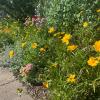There has been an amazing groundswell of support for bees, motivating people everywhere to act—creating pollinator gardens, planting habitat in parks and on farms, reducing pesticide use or campaigning for citywide bans. It is clear that people care, and many have rallied around this issue.
For some, a tangible goal has been to get a honey bee hive. As a result, hives have appeared in gardens and backyards, on rooftops, and in parks and nature reserves. On the surface, this makes sense: if bees are declining, it would seem that more bees in more places will help. Yet, when we look deeper, efforts to increase the number of honey bees on the landscape may be doing more harm than good.
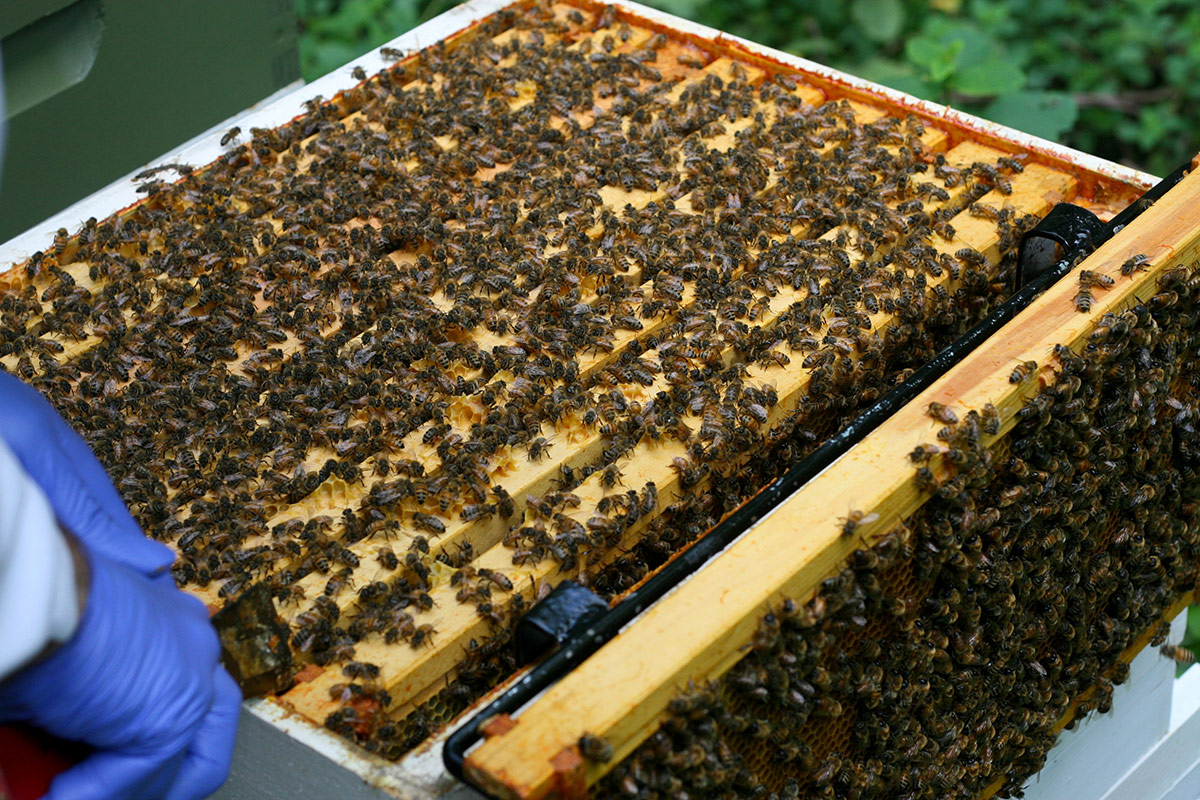
Which bees are endangered?
The honey bee that is widely found in North America is the western or European honey bee, Apis mellifera. It is native to Europe, Africa, and parts of Asia, and thanks to the value of such hive products as honey and wax, has been transported to many other parts of the world, including North America in the 1620s.
It wasn’t until the early twentieth century that honey bees were widely adopted for agricultural pollination. They became increasingly important with the advent of larger monocultures and the use of broad-spectrum insecticides. To fulfill the demand for crop pollination, millions of hives are managed in and trucked all over North America. Although we have seen colony losses, honey bees are not at risk of extinction. In fact, it is estimated that there are more honey bees on the planet now than at any time in human history.
In contrast, there are more than 3,600 bee species native to North America, some of which are facing a real risk of extinction. 28 percent of bumble bee species in North America are considered threatened, and more than 40 percent of invertebrate pollinator species (particularly bees and butterflies) may face extinction in the coming decades.
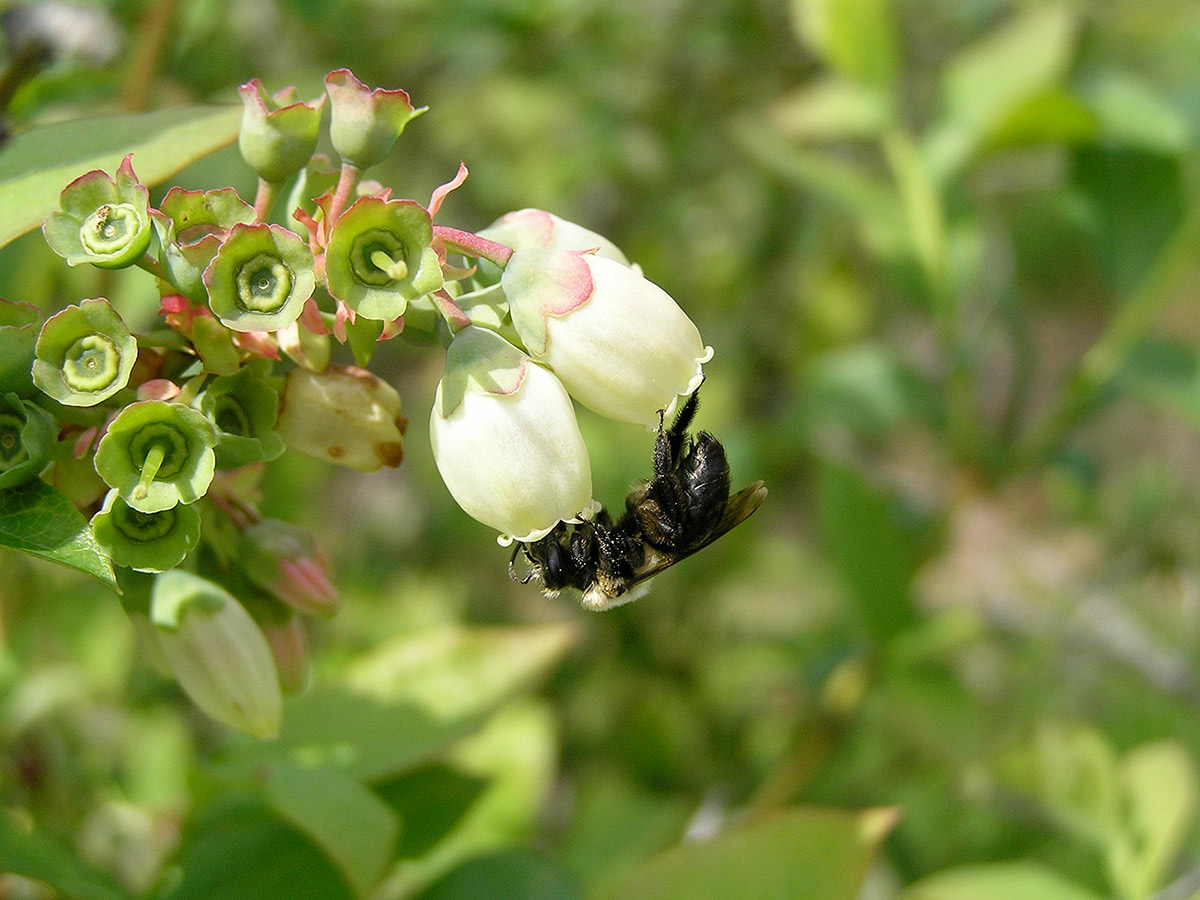
Five reasons why honey bees can be a problem
- Native plants need native bees. Native bees coevolved with our native plants and often have behavioral adaptations that make them better pollinators than honey bees. For example, buzz-pollination, in which a bee grasps a flower and shakes the pollen loose, is a behavior at which bumble bees and other large-bodied native bees excel, and one that honey bees lack.
- Honey bees are sub-par pollinators. The way that honey bees interact with flowers means that they sometimes contribute little or nothing to pollination. Honey bees groom their pollen and carry it in neat pollen cakes, where it’s less likely to contact the stigma of another flower and pollinate it. They are also known “nectar robbers” of many plants, accessing their nectar in a way that means they don’t touch the pollen, often by biting a hole in the base of the flower. By contrast, many of our native bees tend to be messier, carrying pollen as dry grains, often all over their bodies where it’s more likely to pollinate the plant.
- Hungry hives crowd out native pollinators. Introducing a single honey bee hive means 15,000 to 50,000 additional mouths to feed in an area that may already lack sufficient flowering resources. This increases competition with our native bees and raises the energy costs of foraging, which can be significant. One study calculated that over a period of three months, a single hive collects as much pollen as could support the development of 100,000 native solitary bees!
- Honey bees can spread disease. Unfortunately, honey bees can spread diseases to our native bees—deformed wing virus, for example, can be passed from honey bees to bumble bees—and can also amplify and distribute diseases within a bee community.
- Urban honey bee hive densities are often too high. There is growing evidence of negative impacts in towns and cities from the presence of honey bees. A recent study from Montreal showed that the number of species of native bees found in an area decreased when the number of honey bees went up. In Britain, the London Beekeepers Association found that some parts of that city had four times as many hives as the city’s gardens and parks could support. The conservation organization Buglife recommends creating two hectares (five acres) of habitat for each hive, several times the size of an average residential lot in the United States.
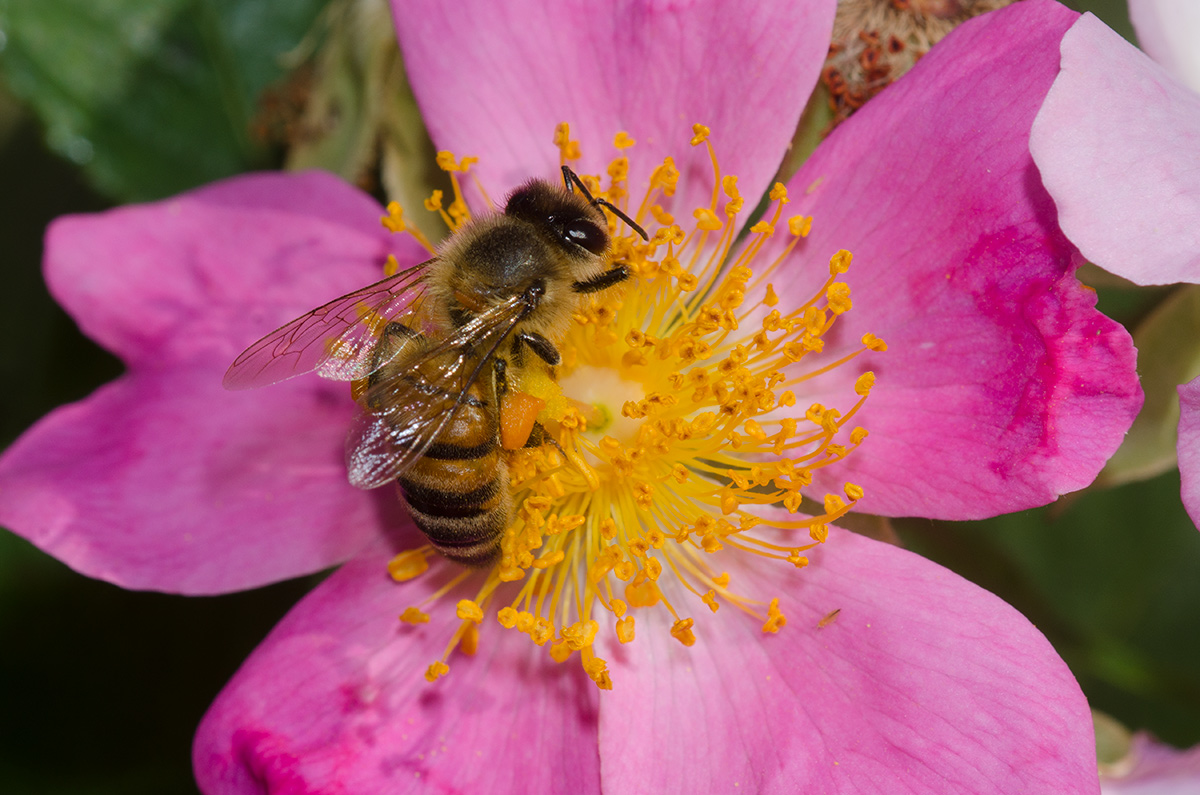
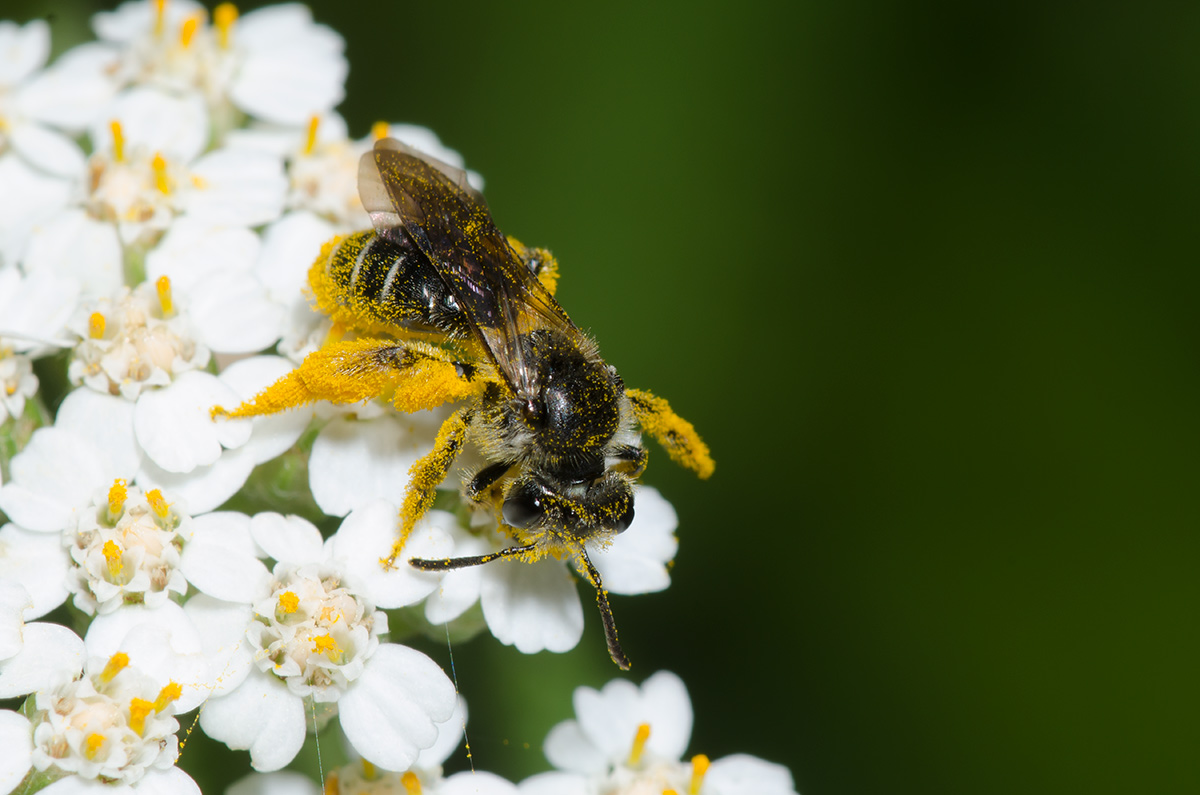
A better way to save the bees
At the Xerces Society, we believe that our primary goal must be to reduce the threats that face all bees. It is absolutely true that honey bees don’t always harm native bees: when resources are plentiful, honey bees are present at low densities, and hives are well tended, the risks are smaller. Yet, with a changing climate and a growing human population, such places are increasingly rare, and the evidence is clear that honey bees can impact native bees.
Beekeeping is not bee conservation. If you are thinking of getting a hive, we encourage you to consider carefully why you want to do so. Managed honey bees are domesticated livestock, and their very presence has the potential to harm native species.
Fortunately, there are actions you can take that will help both honey bees and the thousands of native pollinators that call North America home. Creating pollinator habitat has broad benefits from increasing biodiversity to combating climate change, and such habitat can be situated anywhere—in backyards, on balconies and porches, on rooftops, in office landscapes, in local parks and community gardens.
Honey bees are fascinating to observe and manage, and can inspire people to learn more about insects. But a better approach to bee conservation is to focus on habitat. We all long to see our backyards and gardens full of buzzing bees. Know that if you build good habitat, they will come!
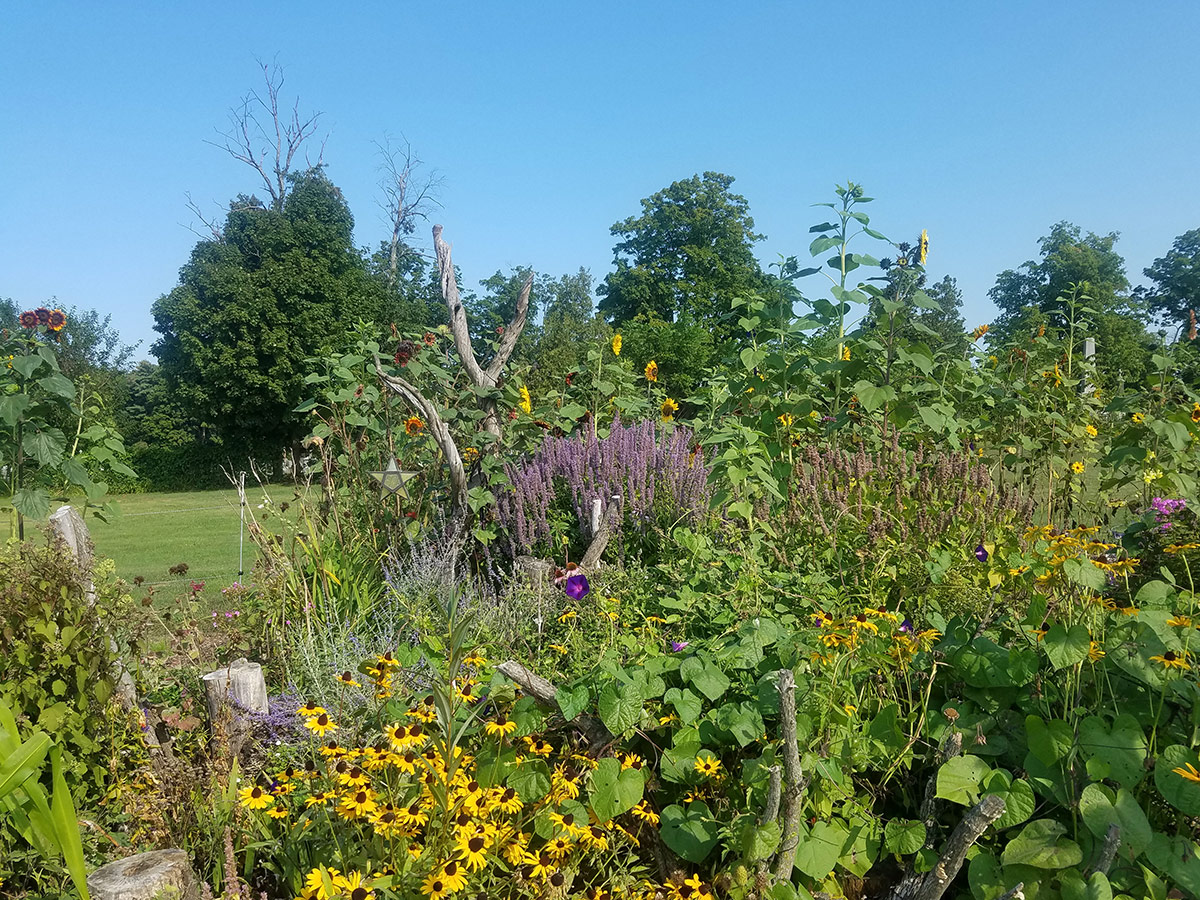
Learn more
- Fact sheet: Honey Bees in North America: Why Getting A Hive Won't "Save The Bees"
- Policy paper: An Overview Of The Potential Impacts Of Honey Bees To Native Bees, Plant Communities, And Ecosystems In Wild LandscapesRecommendations for Land Managers
- Learn what you can do to help bees: Bring Back the Pollinators
- Sign the Pollinator Protection Pledge and add your name to an international movement!



